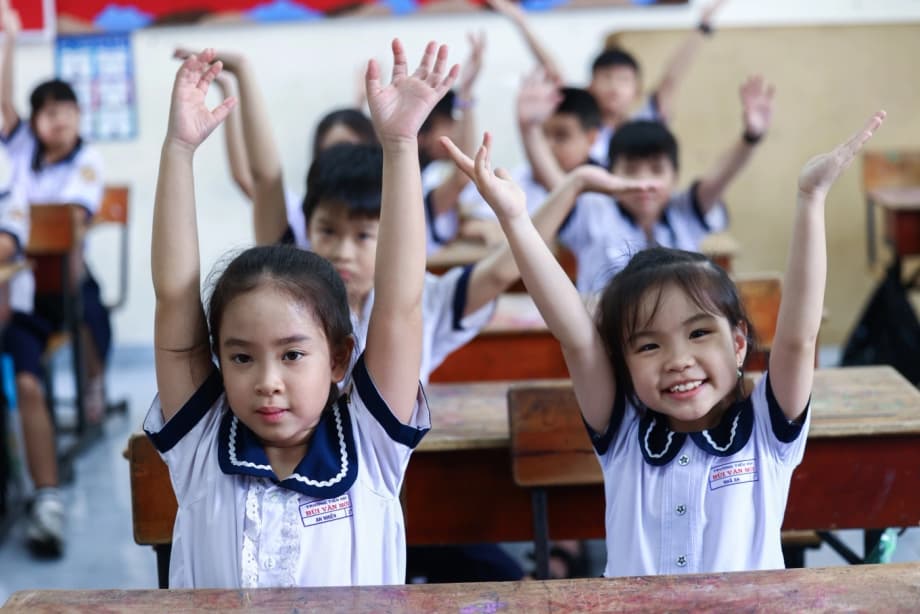A high stakes choice for Vietnamese families
Across Vietnam, families are weighing a demanding education choice. Public schools promise affordability, stability, and deep ties to local community. International schools promise global curricula and English language immersion, but come with high fees and a different classroom culture. Choosing between these systems shapes a child’s daily life, language development, peer group, and even future study and work options.
- A high stakes choice for Vietnamese families
- How public and international schools differ in Vietnam
- Costs and access: what tuition really covers
- Quality and outcomes: grades, skills, and jobs
- Stability and oversight: lessons from school closures
- Bilingual and online programs reshape the market
- What expatriate families should weigh
- How to make a choice that fits your child
- Parent school partnerships make the difference
- Key Points
Many parents who came through the public system and later studied or worked abroad describe a strong foundation that held up in international settings. They see no single right answer, only a fit that depends on a child’s needs and a family’s resources. Vietnam’s schooling landscape has widened in recent years. Families can choose public schools, private and international schools, bilingual programs, online international high schools, or a path that leads to study abroad. Each option has clear strengths and tradeoffs.
Public schools remain the backbone of education in Vietnam. Urban public schools tend to have experienced teachers and a rigorous, exam focused curriculum. The country’s literacy rate stands above 95 percent, a point of pride that reflects decades of investment and steady progress. The government has also announced a major policy shift: public school tuition fees will be waived for preschool through high school beginning in the 2025 to 2026 academic year (September 2025). That change is set to lower financial pressure for millions of families and could boost enrollment further. Meanwhile, the number of private and international schools has grown to serve both expatriate communities and Vietnamese families seeking alternative paths.
How public and international schools differ in Vietnam
Public and international schools often reflect different philosophies. Public schools lean on a national curriculum, strong content knowledge, and an exam schedule that structures the year. International schools typically deliver a foreign curriculum, smaller classes, and extended projects and internships. The differences shape what students do every week and how they are assessed.
Curriculum and classroom culture
In many public schools, teaching is teacher centered. Lessons focus on core subjects and exam preparation. Students work within a set syllabus and a clear progression of knowledge. International schools tend to adopt the International Baccalaureate (IB), British programs like IGCSE and A Level, or American style programs. These environments put greater weight on student initiative, presentation skills, group work, and independent research. Learning continues outside the classroom through projects, enterprise simulations, and internships.
Language and integration
International schools teach primarily in English and recruit teachers who are native speakers or trained in the affiliated country. Students gain language proficiency and familiarity with international academic conventions. Public schools teach in Vietnamese. That brings strong cultural integration and local language mastery. For expatriate students, public schools can be a valuable immersion route, though the teaching style can feel unfamiliar at first. Bilingual schools sit in the middle. They use a mix of Vietnamese and foreign curricula and issue widely recognized qualifications like IGCSE or A Level while keeping Vietnamese language and civics in the timetable.
Facilities and class size
Public schools, especially in big cities, are well established but tend to have larger classes. Thirty to forty students per class is common. Space can be tight, and teachers must manage with fewer resources. International schools usually invest in modern facilities, smaller classes, and more support staff. That environment suits interactive lessons and close academic mentoring.
Costs and access: what tuition really covers
Fees are the most visible difference. The annual tuition at the top tier of international schools in Ho Chi Minh City can exceed the price of a small car. One system charges up to about 843 million VND per year, roughly 33,000 USD, depending on grade level. Several other international schools publish ranges in the 10,000 to 25,000 USD band. These figures do not include application fees, deposits, uniforms, meals, transport, or extracurricular expenses. Early payment discounts are common, and admissions may involve testing or interviews. Popular schools encourage applying well in advance.
Some public institutions offer international or bilingual programs with substantial fees. Vietnam Finland International School, under a public university, lists program fees that can approach 25,000 USD per year at the upper grades. Its bilingual track is lower cost. Many families combine public schooling with out of school tutoring, which spreads spending across the year rather than into a single large school invoice.
Understanding what tuition does and does not include can prevent surprises. Invoices at international schools may itemize a wide range of services, and these vary by campus.
- Enrollment and application processing fees
- Uniforms, textbook deposits, and exam fees
- School bus and meals
- Boarding or dormitory where applicable
- Technology, activities, and trips
Families paying privately sometimes negotiate education allowances with employers. Others choose bilingual routes that cost about sixty percent of fully international programs, or they target entry into public schools where tuition will be waived from the 2025 to 2026 school year. Admissions requirements differ widely, so it helps to map deadlines early, especially for oversubscribed international campuses.
Quality and outcomes: grades, skills, and jobs
Vietnam’s top public universities still carry significant prestige. They are highly competitive and emphasize strong fundamentals in mathematics, sciences, and economics. Graduates often show discipline and content mastery. Yet labor markets now reward presentation, teamwork, and technology fluency alongside grades. The World Economic Forum spotlights critical thinking, adaptability, digital skills, and communication as core competencies for young workers. That is where international programs aim to add value through constant practice and assessment beyond written exams.
Pham Thanh Huong, a human resources leader at a multinational tech firm, described how candidates from international programs stand out in interviews.
Candidates from international programs do not just memorize. They express themselves confidently, manage time well, and work effectively in teams.
Educators also point to the balance between theory and practice. Assoc. Prof. Dr. Tran Xuan Nhi, former Deputy Minister of Education and Training, has observed a curriculum gap in some settings.
There is too much theory and too little practice.
Both perspectives reflect a larger shift. Employers want proof of real work. International campuses try to embed internships, capstones, and live projects into degree paths, while more Vietnamese schools, including public ones, are updating lessons to include presentations, teamwork, and critical thinking. Outcomes vary by major and by campus. For students targeting global companies, creative industries, or advanced technology fields, a study path with extensive practice, English fluency, and international accreditation can be an advantage. For academically focused students who thrive in structured settings and plan to work in Vietnam, public routes offer affordability and strong academic training.
Stability and oversight: lessons from school closures
Brand names and new campuses can look impressive, but school governance matters. One high profile international school in Ho Chi Minh City faced suspension and a proposed dissolution after deep financial and staffing problems, unpaid insurance, and investigations into fundraising schemes. Parents reported large sums tied up in complex education investment contracts that promised free tuition until graduation. The case ended with students transferring out, unpaid obligations, and legal proceedings against leaders of the school’s operating company.
Schools can also be vulnerable to external shocks. Declining enrollment in some international schools followed the pandemic, which triggered an outflow of foreign workers, shrinking corporate education packages, and tougher recruitment of foreign teachers. Local families have shown growing interest in Vietnamese bilingual schools that confer international qualifications at a lower cost, while online international high schools have attracted parents with one tenth the tuition of brick and mortar campuses.
Vietnam has tightened oversight to protect students and raise standards. New regulations that took effect in late 2024 increased transparency requirements for foreign invested education institutions, clarified capital and staffing standards, and strengthened supervision of domestic providers. These changes aim to grow the sector while improving accountability.
Due diligence helps families reduce risk. Ask for audited financial statements, clear refund and withdrawal policies, and information about the school’s governing entity. Confirm accreditation status and the pathway to external exams. Speak with current parents about communication, teacher turnover, and how the school handled recent disruptions.
Bilingual and online programs reshape the market
Bilingual schools have expanded across Ho Chi Minh City and Hanoi. Many now prepare students for IGCSE or A Level while preserving Vietnamese language, literature, and civics. Fees are often around sixty percent of fully international schools, and campuses can be flexible for families who may shift later to public or international tracks. British education groups have also entered partnerships with Vietnamese providers. A long established UK school announced a collaboration to bring its approach to a Ho Chi Minh City bilingual campus, while other UK brands have launched or rebranded schools in Hanoi and Ho Chi Minh City. These steps signal a maturing bilingual sector with clearer pathways to overseas universities.
Online international high schools have become a striking alternative. They deliver curricula such as American high school diplomas, IB, or A Level at a fraction of the cost of traditional international schools. This route can work for students who are self directed and have strong support at home. Families should check accreditation, exam center access, and opportunities for in person lab work or clubs. Social development matters as much as academics, so students may need local sports, arts, or volunteer programs to round out the experience.
What expatriate families should weigh
Foreign nationals living and working legally in Vietnam can enroll children in public schools, especially in major cities. This choice can save considerable cost and accelerate language learning. The payoff is strong cultural immersion and friendships with local peers. The main challenge is adapting to a quieter, more passive classroom culture that expects attentive note taking and respect for hierarchy. Some urban public schools are experimenting with more dynamic methods, but change is gradual and varies by campus.
International schools remain attractive for short stays or when a family plans a university path abroad. They offer familiar curricula, admissions counseling, and English immersion. Top schools can be oversubscribed. Entrance exams and interviews are common, and costs extend beyond tuition to transport, uniforms, and activities. Parents should track application windows and keep a second choice ready in case a space does not open on time.
How to make a choice that fits your child
Every child learns differently, and every family has different priorities. Before choosing, list what matters most and compare schools on those points rather than on advertising or rankings alone. Map out a multi year path and include a backup if circumstances change. If your child aims for study abroad, check how each school handles external exams and university guidance. If you prefer a Vietnamese path, ask how the school strengthens Vietnamese language, national curriculum standards, and exam readiness.
- Budget and financial buffer for added costs such as transport, meals, and exam fees
- Language of instruction and your child’s current proficiency
- Long term goals such as university in Vietnam or overseas
- Learning style, from structured lectures to project based work
- Class size tolerance and need for individual attention
- Location, commute time, and daily schedule
- Governance, accreditation, and transparency of the school’s operator
- Contingency plan if the school changes leadership, fees, or programs
Parent school partnerships make the difference
Whatever the choice, results improve when parents, teachers, and students pull in the same direction. Parents who understand school policies, teacher expectations, and the curriculum can support learning at home. Respectful communication opens doors for early intervention when a child struggles. Parents can help by attending meetings, learning about teaching styles, and backing consistent routines at home.
Many Vietnamese families share a reminder passed down through generations.
If you want your children to succeed, you must respect their teachers.
Respect is not about gifts. It is about valuing the profession, reinforcing classroom expectations, and showing children that school matters. When parents and teachers trust one another, students benefit. That holds true in public schools, bilingual environments, and international campuses alike.
Key Points
- Public schools offer affordability, stability, and strong academic foundations, with tuition set to be waived nationwide from the 2025 to 2026 school year
- International schools deliver global curricula, English immersion, and extensive practice through projects and internships, but at high cost
- Top international school fees in Ho Chi Minh City can reach about 33,000 USD per year, excluding additional charges
- Bilingual schools have expanded and often cost around sixty percent of fully international programs while maintaining Vietnamese studies
- Online international high schools provide remote diplomas at one tenth the cost of traditional international schools, with careful checks needed on accreditation
- Employers value critical thinking, communication, teamwork, and tech skills, pushing schools to add practical learning to strong academic content
- Cases of school suspension and closure highlight the need to review governance, finances, and refund policies before enrolling
- Expatriate families can enroll in public schools for cultural immersion or choose international schools for a smoother path to overseas universities
- The best choice depends on a child’s goals, language needs, learning style, and a family’s budget and tolerance for change




